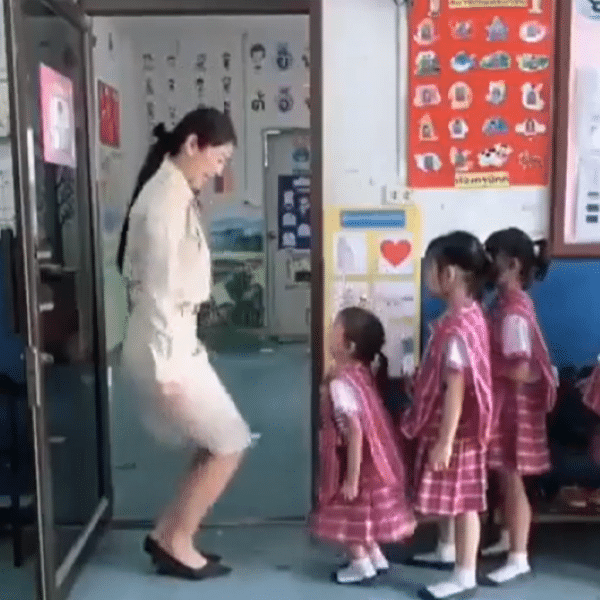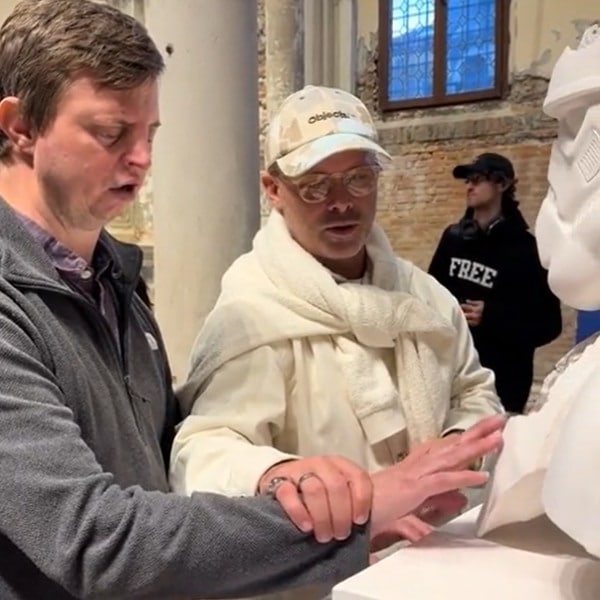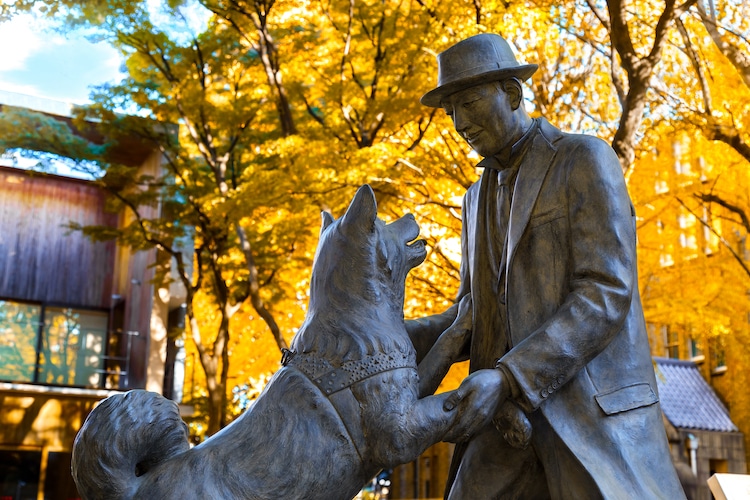
Hachikō with Dr. Hidesaburo Ueno statue at University of Tokyo, Todai campus, Japan (Photo: cowardlion/Depositphotos)
One hundred years ago, on November 10, 1923, a special Akita Inu pup was born. He was adopted by Hidesaburo Ueno, an agricultural professor at Tokyo Imperial University (modern-day University of Tokyo), and called Hachikō. Though it has been almost a century since his passing, the story of Hachikō's unwavering loyalty to his owner continues to inspire dog lovers around the world.
Two years after adopting Hachikō, Ueno passed away unexpectedly from a cerebral hemorrhage at work. The young, white-colored pup was then rehoused several times, ultimately settling in with Ueno's former gardener Kikusaburo Kobayashi. However, Hachikō remained unaware of the fate of his owner. Believing that he would someday return, or perhaps just hopeful that he would, the faithful canine walked to the train station Ueno used to commute to work and waited for his return.
“In the evening, Hachi stood on four legs at the ticket gate and looked at each passenger as if he were looking for someone,” writes Professor Mayumi Itoh. This steadfast loyalty to their human is characteristic of the Akita dog breed, who are known for developing strong bonds with their owner while remaining wary of strangers. Hachikō's determinedness is still astounding though, as he waited through rain or shine, and suffered from abuse from train station employees, children, and other bystanders—all to see his owner again.
Things got a little better for Hachikō after a Tokyo newspaper wrote a piece about him in 1932. This prompted people to send donations to the train station to feed the unwavering pup, and inspired many to make trips to see Hachikō in person. The admiration and love for this dog even led to a fundraising event for a statue of his likeness, which drew a crowd of 3,000 at its unveiling in 1934 (the original statue was later replaced in 1948).
Eventually, nine years and nine months after Uena's death, Hachikō passed away from cancer at the age of 11 in 1935, and was given a memorial service outside of Shibuya Station. “In retrospect, I feel that he knew that Dr. Ueno would not come back, but he kept waiting—Hachikō taught us the value of keeping faith in someone,” wrote Takeshi Okamoto in 1982, who watched Hachikō daily as a high school student.
On what would have been his 100th birthday, Hachikō was honored with a week of celebrations. A video of his life was also shared on YouTube. Many have remarked how incredible it is that Hachikō's loyalty continues to be remembered. Eietsu Sakuraba, author of a book about Hachikō, says: “Even 100 years from now, this unconditional, devoted love will remain unchanged, and the story of Hachikō will live on forever.”
In 1925, a Japanese agricultural professor named Hidesaburo Ueno died unexpectedly at work.
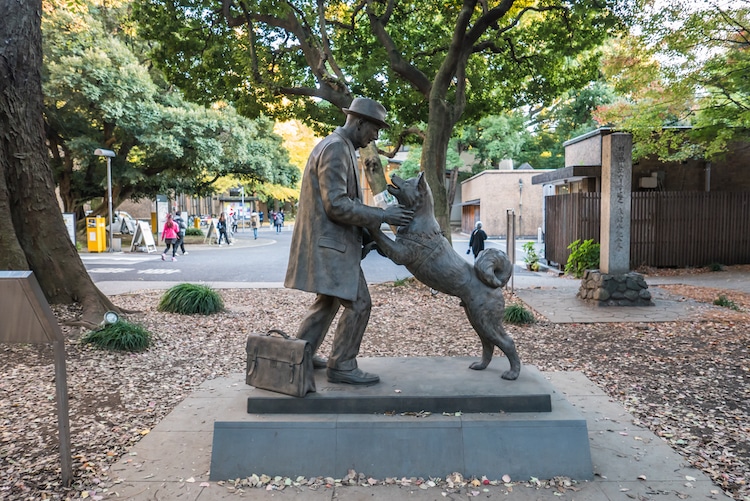
Hachikō with Dr. Hidesaburo Ueno statue at University of Tokyo, Todai campus, Japan (Photo: phurinee/Depositphotos)
His dog, an akita named Hachikō, spent almost 10 years waiting at the train station for his owner's return. He remained loyal until his death in 1935.
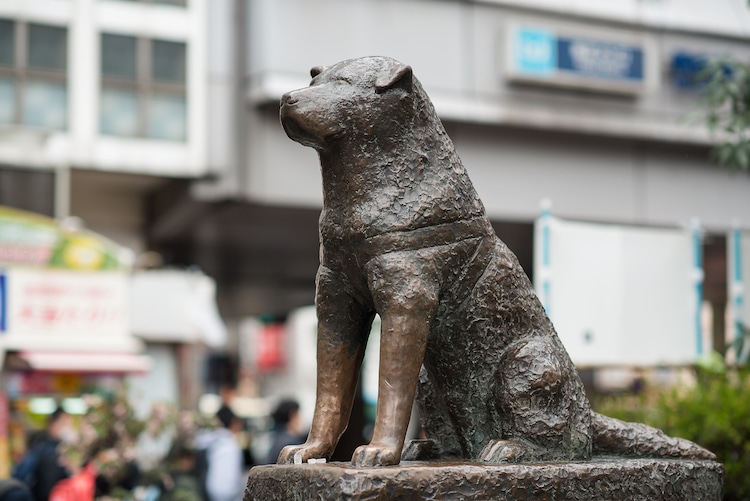
Hachikō dog statue outside of Shibuya Station, Tokyo, Japan (Photo: pio3/Depositphotos)
Watch this video to learn more about Hachikō's life and story:
h/t: [NextShark]
Related Articles:
Watch Officers Rescue a Blind Dog Trapped in a Freezing Pond
World’s Oldest Dog Passes Away at 31 Years Old
Small Californian Town Elects Dog as Its Mayor for Third Time in a Row













































































